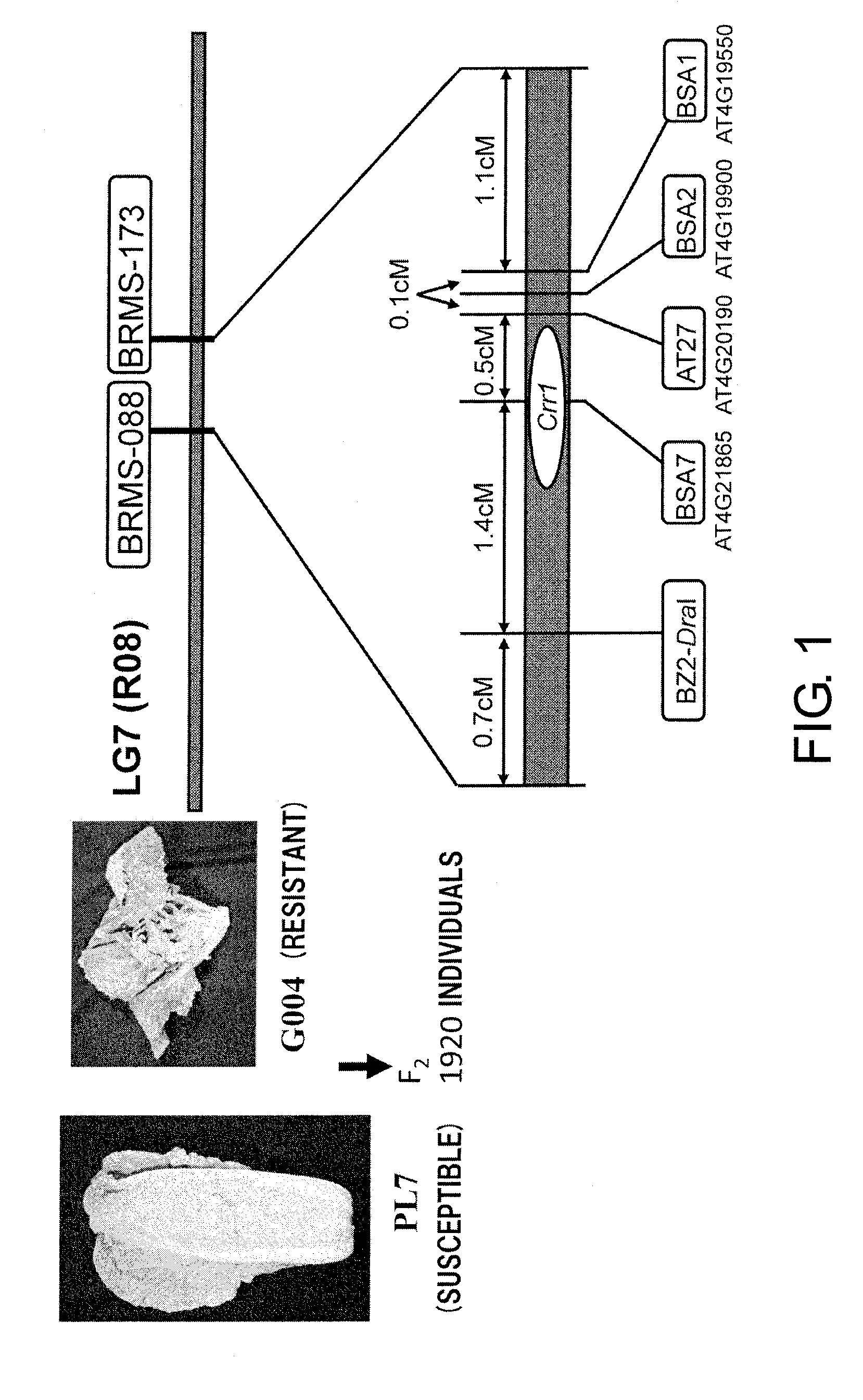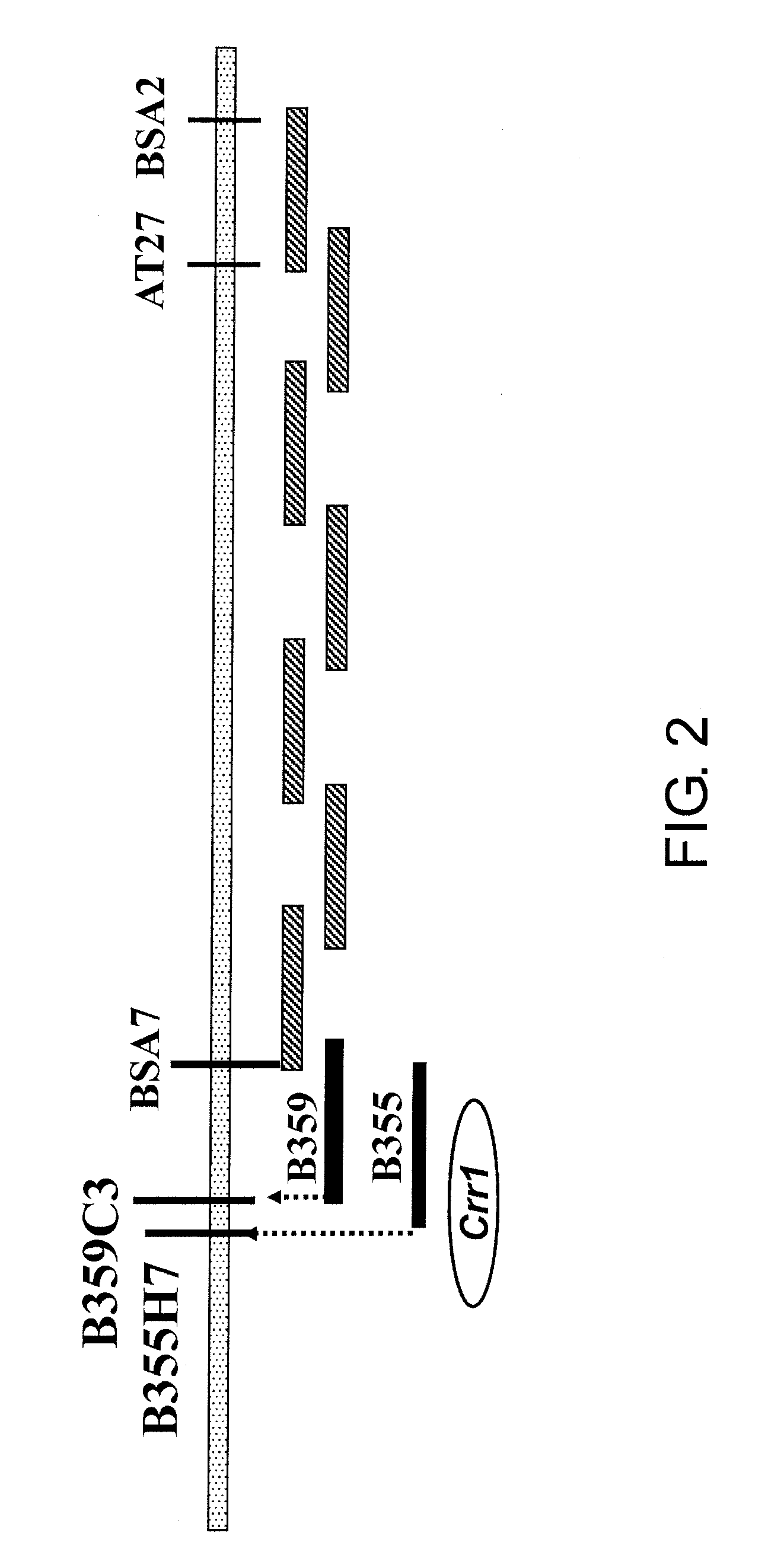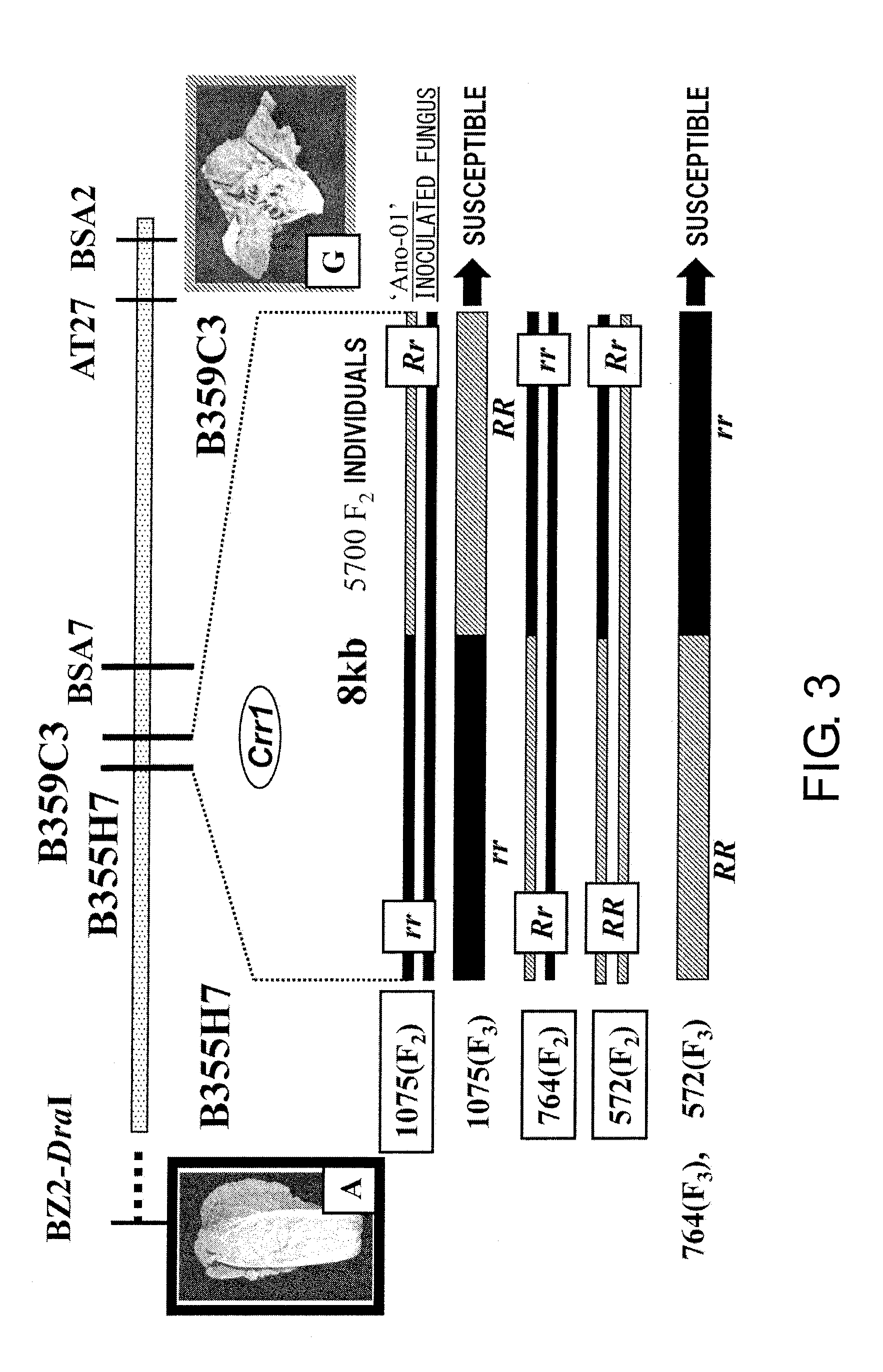Method for producing cruciferous plant resistant to clubroot
a technology of clubroot and resistance genes, applied in the field of clubroot resistance genes, can solve the problems of plant death, density increase, difficult to prevent,
- Summary
- Abstract
- Description
- Claims
- Application Information
AI Technical Summary
Benefits of technology
Problems solved by technology
Method used
Image
Examples
reference example 1
Isolation of a BAC Library Carrying Crr1
[0196]To isolate clubroot resistance genes by map-based cloning, a BAC library of resistant line G004 derived from the European fodder turnip “Siloga” was constructed. This library had an average insert length of 67.4 kb and a size of approximately 38,400 clones, and it was equivalent to 4.7-times the genome of B. rapa which is estimated to be 550 MB (Arumuganathan K, Earle E D., Plant Mol Biol Rep, (1991) 9 (3): 208-219). To isolate BAC clones carrying Crr1, chromosome walking was performed starting from BSA7, which is the marker most closely linked to Crr1 among the linked markers (FIG. 1, Suwabe, K. et al., Genetics, (2006) 173: 309-319).
[0197]After 96 arbitrary E. coli cells were selected and cultured overnight in a liquid medium, and replicas of E. coli were taken. These 96 E. coli were combined into one, and their plasmid DNA was extracted. 384 of such a plasmid DNA pool which combines 96 E. coli into one were produced. The first screeni...
reference example 2
Narrowing Down the Location of Crr1 Using an Individual in which the Markers Near Crr1 are Recombined
[0199]Starting from BSA7, the region around Crr1 was covered with BAC clones, and by comparing the terminal sequences of these BACs between the susceptible cultivars PL7 and G004, multiple markers indicating polymorphism were obtained. From comparison of the marker genotype obtained from the terminal sequences of the BAC clones and the presence of the resistance gene, the markers produced from the terminal sequences of B355H7 and B359C3 were the markers closest to Crr1.
[0200]The marker genotypes of the G004 type and PL7 type were denoted by RR and rr, respectively, and the heterozygous type was denoted by Rr. To narrow down the Crr1 location, individuals with recombination between markers near Crr1 were screened from PL7, G004, and F2 individuals. From approximately 5,700 F2 individuals, those in which genomic recombination of the susceptible type and resistant type had taken place b...
example 1
Estimation of the Crr1 Candidate Gene
[0204]Shotgun clones of B355H7 were produced to determine the DNA sequence of the approximately 8-kb region between B355H7 and B359C3. The DNA sequences of the extracted plasmid fragments were determined according to a standard method using T7 and Reverse Primer, and a DNA Sequence Assembly Software, SEQUENCHER ver. 2 (Hitachi Software Engineering, Tokyo), was used to produce a single sequence. In this region, search of open reading frames (ORF) that encode proteins was done using a genetic information processing software, GENETYX (Genetyx, Tokyo). Based on the determined G004 sequence information, primers were designed at suitable positions, DNA fragments were amplified using the susceptible PL7 as a template, and the nucleotide sequence of this region in PL7 was determined. The DNA sequences were compared between PL7 and G004, and the inserted and deleted sequences as well as the presence of single nucleotide polymorphisms were investigated. As...
PUM
| Property | Measurement | Unit |
|---|---|---|
| Electrical resistance | aaaaa | aaaaa |
Abstract
Description
Claims
Application Information
 Login to View More
Login to View More - R&D
- Intellectual Property
- Life Sciences
- Materials
- Tech Scout
- Unparalleled Data Quality
- Higher Quality Content
- 60% Fewer Hallucinations
Browse by: Latest US Patents, China's latest patents, Technical Efficacy Thesaurus, Application Domain, Technology Topic, Popular Technical Reports.
© 2025 PatSnap. All rights reserved.Legal|Privacy policy|Modern Slavery Act Transparency Statement|Sitemap|About US| Contact US: help@patsnap.com



